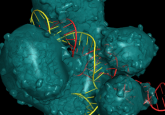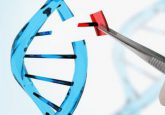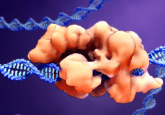Novel CRISPR tools shed light on the epigenetics of cocaine addiction

By adapting existing CRISPR/Cas9 gene editing techniques, researchers learned how a transcription factor may mediate the molecular changes underlying cocaine addiction.

Drug addiction is a rampant public health concern; according to the National Institute on Drug Abuse, more than 22 million Americans will require treatment for a substance abuse issue. Yet, due to a lack of understanding of the molecular alterations that occur in the brain with drug addiction, targeted therapies for substance abuse are lacking. Peter Hamilton, a post-doctoral fellow in Eric Nestler’s laboratory at the Icahn School of Medicine at Mount Sinai, said that it is quite difficult to “unravel the complexity” of this multifaceted neuropsychiatric disorder.
“We know that when an individual takes a drug like cocaine, the primary site action occurs in the synapse, the space between brain cells. That alters the way the cells communicate,” he explained. “In mouse models of cocaine addiction, we also see a surge in the level of CREB, a transcription factor, that turns different genes on that likely mediate these changes. But there are hundreds and hundreds of CREB-binding sites. So, it begs the question, which of these sites actually causes an escalation in cocaine addiction?”
To answer that question, Hamilton and his colleagues modified an existing CRISPR/Cas9 gene editing technique to create a novel tool that could guide CREB directly to specific brain cells responsible for pleasure and reward processing. By making mutations to CREB’s DNA-binding domains, the researchers retained the capacity for it to traffic to DNA, but only to specific CREB binding sites in specific cells in the mouse nucleus accumbens, the area of the brain implicated in pleasure, reward, and addiction development.
“In essence, we created a molecular homing missile where the tracking system can program the exact coordinates of its destination,” Hamilton said. “We can send CREB exactly where—and only where—we want and make sure it doesn’t spread elsewhere. It allows us to really clarify the issue of what CREB does in terms of escalating cocaine addiction when it binds to a single gene site.”
At the 2017 Society for Neuroscience Annual Meeting last month in Washington, DC, Hamilton presented results from recent experiments using this new technique. By using his “molecular homing missile” to study FosB, a gene previously linked to addiction, the group found that CREB binding to FosB was a key pathogenic step in turning on FosB expression in the mouse brain and increasing the animal’s desire for cocaine.
“This tool allows us to look more closely at all these concepts and changes that occur when people take drugs,” Hamilton said. “They may be subtle manipulations—but they allow us to interrogate these complex molecular changes in a causal manner, holding a lot of promise for better understanding the etiology of drug abuse.”





